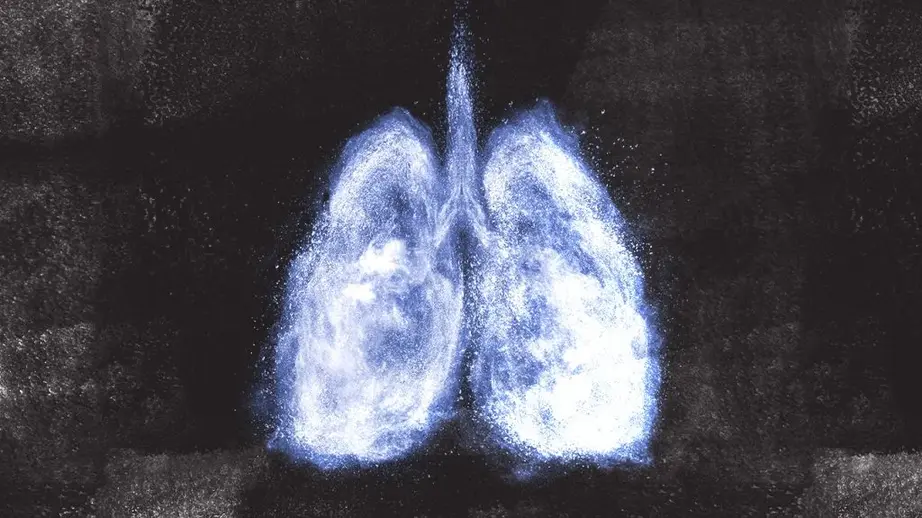When it comes to atrial fibrillation, or AF/afib, it’s a cardiac arrhythmia that brings about irregular heartbeats. This condition interferes with the synchronized rhythm between the upper and lower chambers of the heart, causing unpredictable heart rates. Afib usually begins in the atria, which are the heart’s upper chambers, leading to fast and irregular heartbeat patterns.
It’s important to note that atrial fibrillation can result in a rapid heart rate of 300 to 600 beats per minute, which is significantly higher than the normal range.
Being able to recognize the symptoms of Afib, including tiredness, faintness, chest pain, shortness of breath, and heart palpitations, is vital. Even if you do not have any noticeable signs, it is important to understand that Afib significantly heightens the risk of stroke. This emphasizes the importance of seeking prompt treatment and managing the condition diligently to reduce the likelihood of complications.
Symptoms of Afib
Some individuals may remain asymptomatic despite having atrial fibrillation (Afib) , where as some experience symptoms that includes:
- Palpitations (irregular heartbeat)
- Pain or heaviness in the chest.
- Weakness that is noticeable.
- Fatigue among regulars.
- Exercise tolerance is reduced.
- Having trouble breathing, especially when lying down or exercising
- Feeling dizzy or faint
- Feeling lightheaded
Symptoms can range from subtle to pronounced, and they can change over time. You should document when your symptoms occur, their duration, severity, and the circumstances surrounding their onset for your doctor to accurately diagnose and treat atrial fibrillation (AF).
Factors Contributing to Atrial Fibrillation and Its Associated Risks
In a typical cardiac rhythm, the upper chambers of the heart (atria) contract before the lower chambers (ventricles), facilitating the efficient pumping of blood from the atria to the ventricles and then to the lungs and body.
However, atrial fibrillation (AF) disrupts this orderly process by generating numerous simultaneous electrical impulses in the atria, resulting in rapid and chaotic electrical activity. Consequently, the atria are unable to effectively propel blood into the ventricles. Moreover, the ventricles may contract irregularly and rapidly due to the erratic electrical signals originating from the atria, impairing their ability to adequately pump blood to the body.
Many individuals with AFIB have an underlying heart condition or a history of cardiac events that have impacted the heart’s electrical or mechanical function. These conditions may include increase in blood pressure, heart valve disease, coronary artery disease (CAD), heart attacks, heart surgeries, congenital heart defects, and others.
Additionally, certain health conditions elevate the risk of developing AFIB , such as kidney disease, diabetes, thyroid diseases, lung diseases, Increase in Weight, sarcoidosis, sleep apnea, blood related issues like blood clothing, and viral infections. In some cases, the underlying cause of AFIB remains unidentified.
Certain uncontrollable factors, such as old age (especially 65 or older), and a family history of AFIB, may also heighten the risk of AFIB development.
Furthermore, lifestyle choices can contribute to AFIB risk, including alcohol consumption, smoking, Using stimulant drugs like cocaine, excessive exercise, physical inactivity, and severe stress.
Ways to Diagnose AFIB
Diagnosing Atrial Fibrillation:
Doctor will assess following to determine whether you are a patient of AFIB or not:
- symptoms and medical background
- A physical examination
- LAB Tests
Your doctor may inquire about your family’s heart health, dietary and your exercise habits, and other factors influencing heart disease risk alongside evaluating your symptoms.
If AFIB or another heart condition is suspected, a thorough examination of your heart and lungs is likely.
This evaluation will include following:
- Listen to your heart and lungs
- Assess your pulse rate
- Check your blood pressure
- Investigate for signs of heart failure or an enlarged heart, including swelling in your legs and feet
- Look for any signs of hyperthyroidism, such as an enlarged thyroid gland
To confirm AFIB diagnosis, your doctor may ask for various tests focusing on analyzing heart rhythm/rate.
These tests may include:
- Electrocardiogram (ECG): A quick and common test recording heart electrical activity.
- Holter Monitor: A portable ECG worn for upto 48 hours, providing a comprehensive heart rhythm assessment.
- Event Recorder or Ambulatory Telemetry Monitor: Similar to a Holter monitor but worn for longer durations to capture intermittent symptoms.
- Echocardiogram: An ultrasound of the heart providing detailed images to detect abnormalities.
- Blood Tests: To identify thyroid issues or other contributing conditions.
- Chest X-Ray: To examine heart and lung conditions potentially linked to symptoms.
Prognosis of Atrial Fibrillation
Atrial fibrillation is always taken as a significant health condition that requires immediate attention; however, there are instances where it spontaneously resolves without complications.
Conversely, it can also remain as a permanent condition, unresponsive to treatment, posing a heightened risk of severe complications.
Your prognosis upon being diagnosed with AFIB may vary based on different causes, frequency of its occurrence, and the presence or absence of noticeable symptoms.
Time Duration of AFIB Occurrence or its Episode
Atrial fibrillation (AFIB) exhibits varied durations among individuals. For some, AFIB resolves on its own without needing any special treatment, while for others, it persists for years, and gets severe over time.
AFIB can manifest as intermittent also knowns as ‘paroxysmal’, characterized by sporadic occurrences that may seem random or triggered by specific activities.
Typically, these episodes last less than 24 hours, though occasionally extending up to a week. Treatment for paroxysmal AFIB may be necessary or occasional monitoring may suffice.
Alternatively, AFIB can be persistent, lasting beyond a week and requires treatment. Long-term AFIB indicates an abnormal heart rhythm that remains active for over a year.
If efforts to restore normal heart rhythm prove futile despite multiple attempts to recover it then AFIB may consider as a permanent health condition. In such cases, medication may be prescribed to regulate heart rate and prevent excessive acceleration.
Treatment for Atrial Fibrillation
Embrace a world of possibilities when it comes to treating atrial fibrillation (AFIB). From making simple lifestyle adjustments to exploring the benefits of relevant medications, nonsurgical procedures, and even cardiac surgery, the range of treatment options is vast. By considering these diverse avenues, you can take control of your AFIB and pave the way towards a healthier, more fulfilling life.
Your doctor may advise you to make positive changes in your life, such as embracing a heart-supporting diet, engaging in moderate exercise, practicing stress reduction techniques, and limiting alcohol and drug intake.
If lifestyle adjustments alone are not enough, medication can be prescribed to effectively control heart rate, rhythm, and alleviate any complications arising from AFIB.
Additionally , Atrial Fibrillation can be treated with surgery or non-surgical methods. The aim is to restore the heart’s normal rhythm by eliminating abnormal tissue or redirecting abnormal signals in the heart.
Medication Options
Medications for treating Atrial Fibrillation are employed to either normalize or regulate your heart rhythm, manage heart rate, or mitigate potential complications.
Heart rhythm control medications include:
procainamide (Pronestyl)
disopyramide (Norpace)
flecainide acetate (Tambocor)
propafenone (Rythmol)
sotalol (Betapace)
dofetilide (Tikosyn)
amiodarone (Cordarone)
dronedarone (Multaq)
Heart rate control medications include the following:
Beta-blockers
Calcium channel blockers
Digoxin (Lanoxin)
To reduce the risk of blood clots and stroke, doctor may also prescribe a blood thinner, such as:
Apixaban (Eliquis)
Rivaroxaban (Xarelto)
Edoxaban (Savaysa)
Dabigatran (Pradaxa)
Heparin
Anticoagulants pose a risk of heightened bleeding, and your doctor may deem them unnecessary if they determine you are not at an elevated risk for stroke.
Surgical and Other Procedures
Procedures aimed at managing AFIB span from minimally invasive techniques to surgical interventions, including:
Electrical Cardioversion During this procedure, you receive a sedative, and a controlled electrical shock is administered through paddles or patches placed on your chest in an attempt to restore your heart’s regular rhythm.
Catheter Ablation A slender catheter is inserted into a blood vessel and then directed to heart, where various methods such as energy, heat, or extreme cold are utilized to eliminate the heart tissue responsible for arrhythmia.
Maze Procedure Various techniques of this procedure utilize a scalpel, radiofrequency waves, or extreme cold to generate a pattern of scar tissue within the heart, aiding in the regulation of erratic electrical signals.
Atrioventricular (AV) Node Ablation If other treatments prove ineffective, this procedure may be contemplated. It involves eliminating the pathway linking the upper and lower heart chambers. Subsequently, a pacemaker implantation is necessary to regulate the lower chamber’s rhythm, alongside continued administration of blood thinners.
Left Atrial Appendage Closure This procedure closes off a small sac in the left atrium that may responsible of blood clots forming in the area.
How to Prevent AFIB ?
Several lifestyle modifications can help in the prevention or management of atrial fibrillation. These include:
- Eliminating activities from your life that may trigger AFIB
- Adhering to a heart-healthy diet
- Abstaining from smoking
- Engaging in regular exercise
- Maintaining a healthy body weight
- Avoiding alcohol consumption
- Limiting caffeine intake
- Managing stress effectively
- Using caution with cough and cold medications, as they may trigger the symptoms.
Additionally, it’s essential to ensure the effective treatment or management of pre-existing health conditions that could contribute to AFIB, such as sleep apnea, diabetes, or high blood pressure.
DIET for AFIB
Adhering to a suitable diet may aid in reducing the frequency of atrial fibrillation (AF) episodes or lowering the risk of developing the condition.
Excessive salt intake, for instance, can elevate blood pressure, thereby increasing the likelihood of AF occurrence.
Similarly, caffeine consumption is often implicated in AFIB as it can elevate heart rate and disrupt heart impulses.
Moderate or complete avoidance of alcohol is advisable, as even modest amounts can trigger AFIB episodes.
Furthermore, certain ostensibly healthy foods, like leafy greens and kimchi, may have adverse effects depending on individual heart health considerations.
Effect of Atrial Fibrillation on Mental Health
It is widely accepted by almost all health practitioners that individuals with atrial fibrillation (AF) face an increased susceptibility to depression and anxiety, likely stemming from the stress and uncertainty associated with managing the condition.
Conversely, symptoms of depression may also increases the likelihood of developing AFIB in the future, suggesting a bidirectional relationship between AFIB and depression.
Taking proactive measures to address mental health and well-being, including seeking professional assistance and engaging in self-care practices such as yoga and exercise, may potentially mitigate the risk of AFIB and other cardiac ailments.
If you suspect you may be experiencing depression, consulting with a mental health professional is advisable to ensure proper evaluation and treatment.
Different Complications linked with Atrial Fibrillation
Atrial fibrillation is a serious health condition, even in the absence of immediate symptoms such as chest pain or heart palpitations.
Although many individuals may live for years without any complications triggered by AFIB but still it poses future risks in several ways. For instance, AFIB can becomes a reason behind the formation of blood clots , which may obstruct blood flow to vital organs due to ineffective heart pumping.
Two widely noticed complications of atrial fibrillation include:
- Blood Clots: AFIB-induced ineffective heart pumping may lead to blood pooling in the heart, fostering the formation of clots that can potentially travel to other body regions, impeding blood circulation to organs.
- Heart Failure: Stressful heart pumping capacity due to AFIB may result in inadequate blood supply to the body, precipitating heart failure.
Additional potential complications associated with AFIB comprise:
- Stroke: Arising from the migration of a blood clot to the brain.
- Heart Attack/ Heart Failure
- Sudden Cardiac Arrest
Source : StopAFIB.org , Heart.org , EverydayHealth.com



